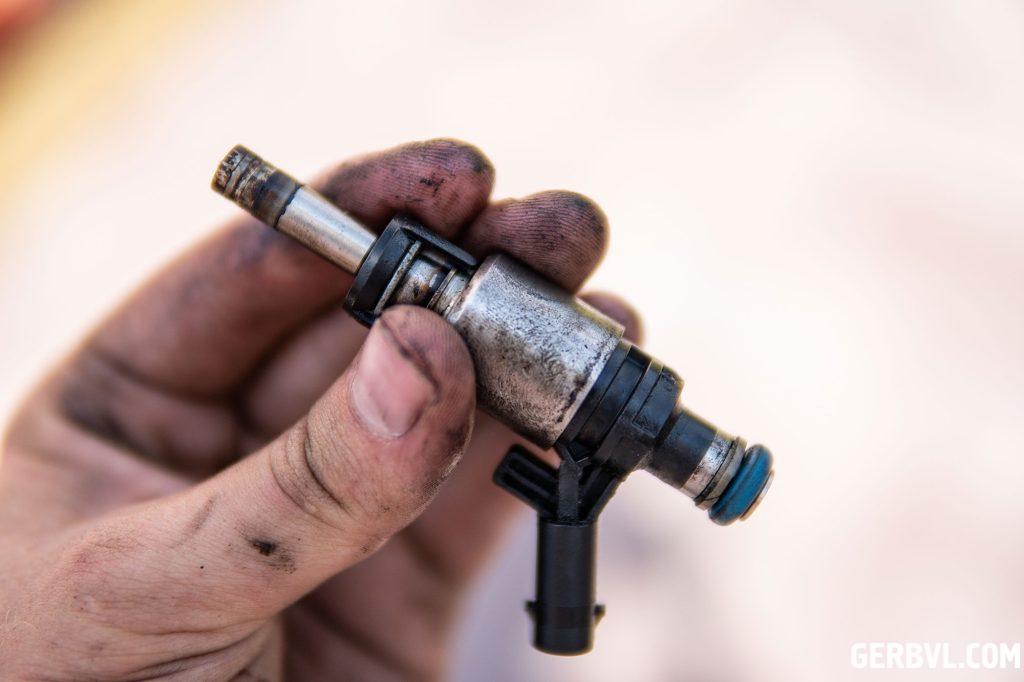A sequence of tiny, potent explosions and exact timing are involved in the chain reaction that occurs when you turn on your car’s ignition. Fuel injectors, the brains behind your engine’s internal combustion system, are in charge of ensuring that your car can convert fuel’s potential energy into mechanical motion.

Gaining knowledge about how fuel injectors impact engine performance will help you maintain your engine more effectively, extend its lifespan, and possibly even drive more smoothly. Learn about fuel injectors, including their definition, location, and operation.
A Brief Overview of Fuel Injectors
Fuel injectors are in charge of precisely regulating the amount, timing, and pattern of gasoline delivered to the engine. They are an essential component of an engine’s fuel delivery system, ensuring that the right air-fuel mixture is present in the combustion chamber in order for the internal combustion engine to function.
Modern automobiles include fuel injectors, which provide greater control and precision than carburetors, which draw fuel into the engine’s passageways using a venturi. They can adjust the fuel-air mixture for a range of situations, from idling at a traffic light to cruising at highway speeds, by using computer controls.
In order to guarantee accurate fuel delivery, fuel injectors are positioned strategically. They are often placed close to the intake valve on the intake manifold of a conventional engine. This arrangement facilitates a uniform distribution of fuel prior to its interaction with the air within the combustion chamber.
In more modern high-performance vehicles, direct fuel injectors are located in the cylinder head, close to where the combustion takes place. This strategy, known as direct injection, allows more precise control over the fuel delivery, yielding better fuel economy and performance.
WORKINGS OF FUEL INJECTORS
Fuel is first supplied to the engine via the system from the car’s fuel tank. When the fuel reaches the fuel injectors, it is precisely injected into the combustion chamber where it is atomized and combined with air to create a very flammable air-fuel combination.
The Engine Control Unit regulates the amount of gasoline and when it is delivered. It employs sensors to keep an eye on a number of operational characteristics, such as air intake, throttle position, and engine speed, and then modifies the fuel injectors’ output accordingly.
Pressurized fuel can be discharged into the intake port or straight into the combustion chamber when the ECU decides it’s time to inject fuel. The fuel injector receives this signal by an electrical pulse.
Comparing the fuel injection system to conventional carbureted systems, the precision is much higher. You experience less hazardous pollutants and more efficient combustion when you have more control over the fuel delivery. Additionally, it guarantees a speedier reaction to variations in the engine’s workload.
Upkeep and Cleaning of Fuel Injectors
Keeping your fuel injectors clean and maintained makes your engine run smoother and more efficiently. gasoline injectors’ tiny apertures can become clogged with impurities from gasoline or other sources over time, which can impair the fuel injectors’ ability to distribute fuel evenly in a fine mist.
Your fuel injectors should be inspected, cleaned, and replaced as needed as part of routine maintenance. It can enhance performance, save down on gasoline, and possibly shield your engine from more serious, expensive damage.
